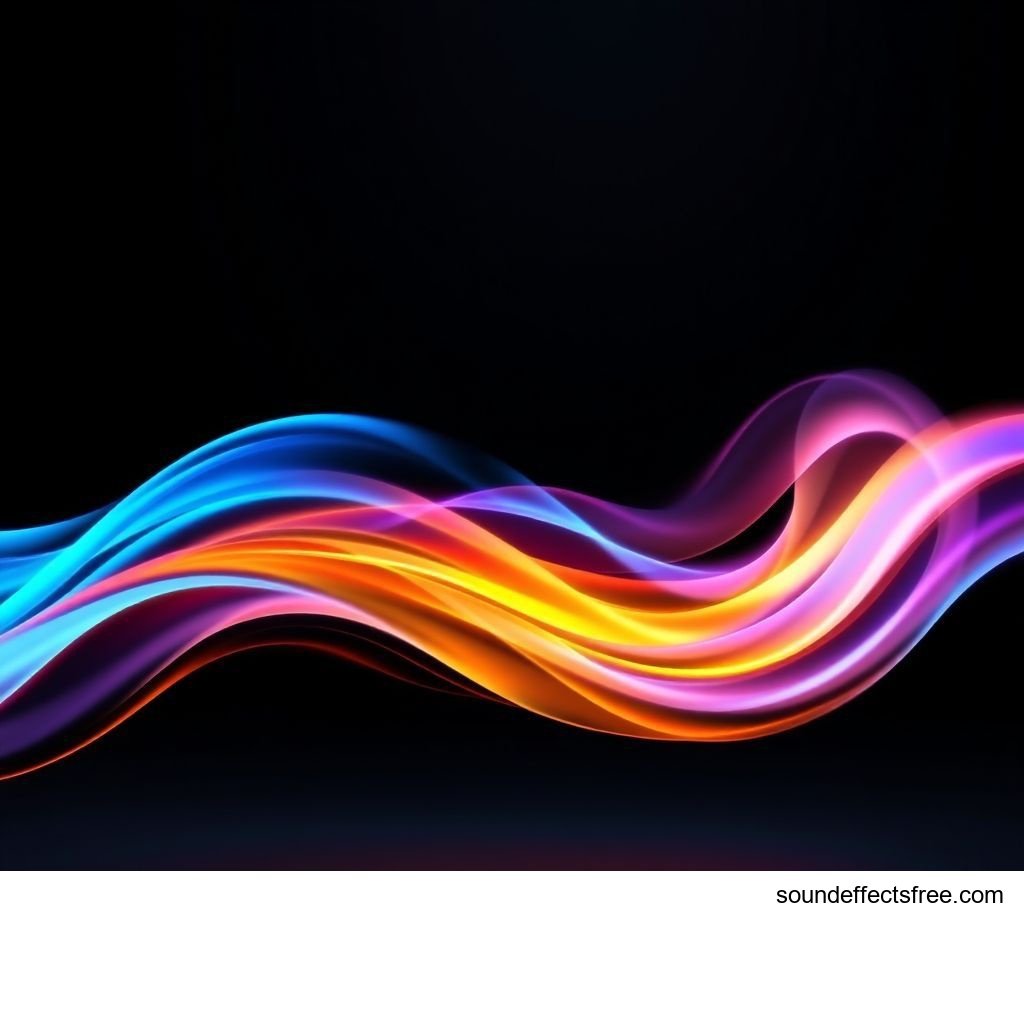Smooth Whoosh: Elevate UI Experience Optimizing UI with subtle audio effects enhances user experience. A well-placed "whoosh" sound makes a significant difference. It signals progress and provides instant feedback. This small audio effect greatly improves interaction. It creates a smooth transition for users.
Applications in Media
The "whoosh" sound is incredibly versatile. It enhances many digital experiences. Think about a game menu opening. A gentle "whoosh" makes it feel responsive. It guides the user seamlessly. This subtle audio cue is often overlooked. However, its impact is profound. A fast "whoosh" can signify speed. A soft "whoosh" can imply grace. Every "whoosh" serves a purpose.
Industry-Specific Uses
In mobile apps, a "whoosh" often accompanies screen changes. Swiping through photos uses a smooth "whoosh". Opening a new section might have a distinct "whoosh". For video games, a "whoosh" can mark character movement. It also signals weapon swings. User interface (UI) elements like pop-ups benefit from a quick "whoosh". Even e-learning platforms use a soft "whoosh" for slide transitions. The right "whoosh" makes software feel alive. It is a vital part of a great UI.
Creative Techniques
Designers use various "whoosh" techniques. A layered "whoosh" adds depth. A distorted "whoosh" can create a unique effect. Sometimes, a "whoosh" starts quiet and builds. Other times, it quickly fades. The timing of a "whoosh" is crucial. It must match the visual transition perfectly. This ensures a truly smooth transition. A poorly timed "whoosh" can be jarring. A well-executed "whoosh" is almost invisible. It simply feels right.
Technical Analysis
Understanding the "whoosh" sound requires some technical insight. It is more than just a quick sound. Its characteristics define its feel. This helps in selecting the right "whoosh". It also aids in creating custom variations. Every "whoosh" has unique properties.
Waveform Characteristics
A typical "whoosh" waveform shows a rapid attack. Then comes a quick decay. The sound begins strong and then quickly diminishes. This shape mimics the feeling of swift movement. It is often non-linear. The sound might start loud and soften. This creates a natural "whoosh" effect. A clean waveform means a clear "whoosh". Distorted waveforms can add grit.
Frequency Profile
The frequency profile of a "whoosh" is wide. It covers a broad spectrum. Low frequencies provide a sense of weight. High frequencies add crispness. Mid-range frequencies give the "whoosh" its body. Often, a "whoosh" will sweep across frequencies. It moves from high to low or vice-versa. This frequency sweep is key to the "slide" sensation. It defines the character of each "whoosh". Understanding this helps refine the "whoosh" for specific needs.
Production Tips
Creating effective "whoosh" sounds is an art. It involves careful recording and editing. The goal is always a natural, smooth transition. High-quality production ensures a professional "whoosh".
Recording & Editing
Recording a "whoosh" can be simple. Waving objects in front of a microphone works. Fabrics or thin sticks produce distinct "whoosh" sounds. Then, editing refines the raw recording. Remove unwanted noise. Adjust the gain and dynamics. Apply subtle equalization to shape the "whoosh". A good editor can transform a basic recording. They craft it into a perfect UI audio effect. This ensures a clean and impactful "whoosh".
Software Tools
Many digital audio workstations (DAWs) are excellent. Ableton Live, Logic Pro, and Pro Tools are common. These tools allow precise editing. You can adjust the "whoosh" length. You can also manipulate its pitch. Plugins can add reverb or delay. This enhances the spatial feel of the "whoosh". Synthesizers can also generate unique "whoosh" sounds from scratch. They offer endless possibilities for a custom "whoosh". Pro Sound Effects offers professional sound libraries for inspiration.
Creative Implementation
Beyond basic use, "whoosh" sounds can be highly creative. They can transform an ordinary UI. Thoughtful implementation makes all the difference. It turns a simple "whoosh" into an immersive experience.
Layering Methods
Layering multiple "whoosh" sounds adds complexity. Combine a low-frequency "whoosh" with a high-frequency one. This creates a richer, fuller sound. You might layer a short "whoosh" with a longer decay. This technique gives depth to a transition. It makes the UI feel premium. Experiment with different textures of "whoosh" sounds. Find combinations that resonate with your design. A layered "whoosh" offers greater impact.
Spatial Effects
Adding spatial effects enhances the "whoosh". Reverb makes the sound feel distant or in a large space. Delay can create echoes or a sense of movement. Panning a "whoosh" across stereo channels follows the visual action. If an element slides left, the "whoosh" can follow. This creates an intuitive and immersive UI. It guides the user's attention. A well-placed spatial "whoosh" is powerful.
Sound Pack Integration
Using pre-made sound packs is efficient. They offer a range of professional "whoosh" sounds. Integrating them smoothly is key.
Using with Other Sounds
A "whoosh" sound often works best with other UI sounds. Combine it with a "tap" sound for a button press. Maybe add a soft "chime" for confirmation. The "whoosh" acts as a bridge. It connects discrete actions. It creates a cohesive audio experience. Consider how your "whoosh" blends. Does it complement other audio effects? Or does it clash? Seamless integration is the goal. Related whoosh sounds can provide more options.
Complete Collection
A comprehensive sound pack provides all needed sounds. This includes various "whoosh" styles. It also offers "tap" sounds, "clicks", and "beeps". Having a full collection ensures consistency. All sounds in a pack are designed to work together. This saves time and effort. It guarantees a polished audio experience. Get the full sound pack for comprehensive audio solutions. Remember to check out the UI Confirm Tap for another essential sound.
Frequently Asked Questions
Q1: What is a "whoosh" sound in UI? A: A "whoosh" sound is a subtle audio effect. It signals movement or a quick UI transition. It enhances user experience.
Q2: Why is a "smooth transition whoosh" important? A: A smooth transition "whoosh" provides instant feedback. It makes UI interactions feel more responsive. It also creates a sense of fluidity.
Q3: How many types of "whoosh" sounds exist? A: Many types exist. They vary in length, pitch, and texture. Each "whoosh" is suited for different animations.
Q4: Can I create my own "whoosh" sound? A: Yes, you can record and edit your own "whoosh". Use common objects and audio software. Many online resources also offer tutorials.
Q5: Where can I find professional "whoosh" audio effects? A: Professional sound libraries offer high-quality "whoosh" audio effects. Look for dedicated UI sound packs. They provide ready-to-use samples.





